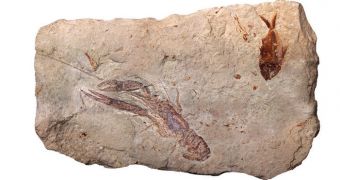Marine biologists studying the planetary ocean say that communities of peculiar microorganisms and more complex animals could exist nearly anywhere on the ocean floor, not only at special locations. A team recently found such a grouping of lifeforms more than 1 kilometer from the Lost City.
This is a landscape feature known among geologists and planetary scientists as the mid-Atlantic Ridge. The area is heavily dotted with hydrothermal vents, conduits through which the Earth's mantle vents off gas and chemicals into the water above.
Temperature levels around these vents are extreme, reaching hundreds of degrees Celsius. In the coldness of the ocean, they provide some creatures with a well-deserved ecosystem-within-an-ecosystem. However, studies revealed another side of them, that experts didn't know about.
While investigating the ocean floor more than a kilometer away from the Lost City ridge, experts from France and the United Kingdom found a community of microorganisms that were thought to be capable of braving the harsh conditions of their environment only around hydrothermal vents.
At the same location, experts found fossilized remains of mussels, clams and snails, which indicate that even these species can survive under the harsh conditions of the deep ocean, unprotected by the heat of the hydrothermal vents.
One of the reason why these studies are so important is that they teach experts about what to expect when they finally begin looking for life on other planets. The Saturnine moons Titan and Enceladus, and the Jovian moon Europa may all feature similar conditions.
“We've known since the 1970s that high temperature vents along the Mid-Atlantic Ridge can host amazing communities of weird and wonderful creatures which feed on bacteria that thrive in the extreme conditions,” says Dr. Crispin Little.
“But these diverse communities have not been observed at Lost City, which has been a bit of a mystery for scientists because there are plenty of these bacteria there for them to feed on,” adds the expert, who is a paleontologist at the University of Leeds, in the UK.
He is also a coauthor of a new paper detailing the findings, which is published in the latest issue of the esteemed journal Proceedings of the National Academy of Sciences (PNAS).
“The other interesting thing is that sites like Lost City would have been more common in the early history of the Earth when more mantle was exposed,” the team says.
“Therefore the communities of animals found at serpentinization sites could provide clues about how life itself could have first formed in a purely geochemical environment on this planet, and potentially others,” scientists conclude.

 14 DAY TRIAL //
14 DAY TRIAL //